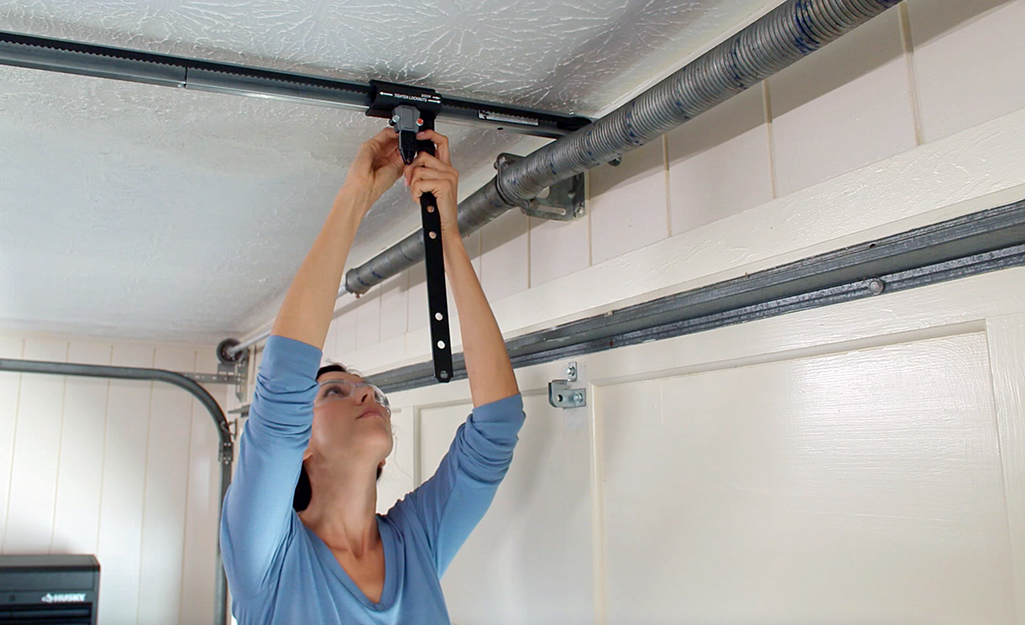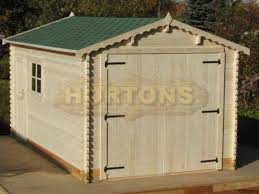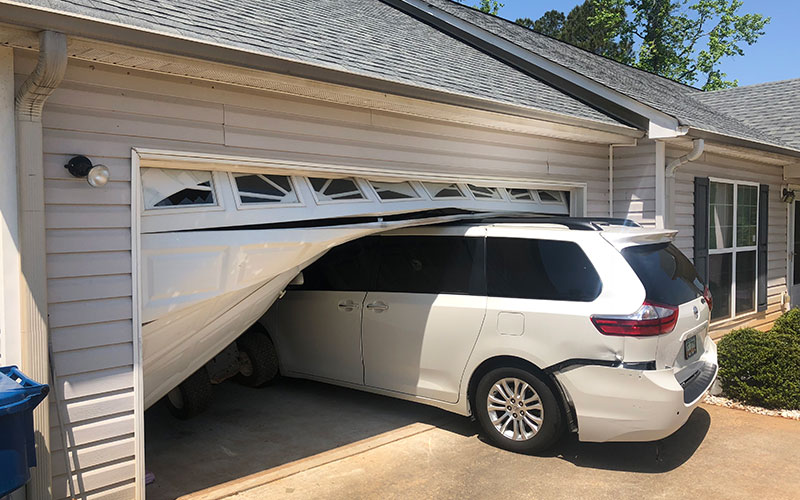
Garage shelving can be a great way to increase your garage's storage capacity. There are many different types of garage shelving available, including freestanding and wall-mounted. It is important that you choose a unit that can hold all the items in your garage. Choosing a shelving unit with the right material is also important. Some materials are more durable, and more resistant to spills and stains than others.
Garage shelving can either be made of metal, particle board or MDF. Particle board, while lightweight, is more likely than metal to rust. You might choose a more robust shelving system if you intend to store large items such as tools or equipment.
Wall-mounted shelving is a great way of maximising your storage space. Mounted shelves can be attached to your garage's walls by using brackets. These brackets, made from metal, attach to your garage walls via brackets. Mount your shelves at least 16inches above the floor. Ceiling-mounted shelving systems are also available that project downward. These units are lighter than a traditional freestanding unit, making them more portable.

Freestanding units, which are usually made from metal or wood, can be mounted to the ceiling and wall. Although they are more flexible than other shelving types, they can take up floor space. You'll need a drill, and tools to install them.
The rail shelves can be made from either steel wire or chrome metal. The vertical metal tracks are mounted in the wall, and the brackets fit into the slots. The shelves are adjustable, which allows you to add and remove items as needed. While they are usually designed to hold heavy objects, they are easily moved to create more storage space.
Particle board works well for shelving, but it can stain when a can of engine fluid leaks. Metal shelving doesn't absorb chemical and is nonporous. It can be used to store paint and other chemically-based products.
MDF and particle board are good choices if you don’t need to support heavy items but don’t want to compromise structural integrity. Both are sturdy and easy to assemble. These units are also powder coated to prevent scratches and dents.

Particle board and MDF are generally lighter than metal, but the weight capacity isn't that much better. Plastic shelving is cheaper and easier to transport. You should also be aware that plastic shelving is more easy to clean than MDF so it might not work well in a messy, wet or dusty garage.
An adjustable rail shelf can be another option. This type of shelving can also be flexible. However, you will need to find studs for the track to attach to your wall. Many of these shelves aren't suitable for drywall over concrete, though.
Depending on the materials used, the price of your garage shelving will vary. The material that you decide to use can affect your energy bills as well. Be sure to use a temperature-controlled space if you plan to store food or hazardous materials. You should also cover the shelves to keep spills and stains out.
FAQ
How much does it take to completely gut and remodel a kitchen?
You may be curious about the cost of a home renovation.
A kitchen remodel will cost you between $10,000 and $15,000. There are ways to save on your kitchen remodel while still improving the space's look and feel.
One way to reduce costs is to plan ahead of time. You can do this by choosing a design style that suits you and your budget.
Another way to cut costs is to make sure that you hire an experienced contractor. Professional tradesmen are familiar with every step of construction, so they won't waste their time trying to figure it out.
It's best to think about whether you want your current appliances to be replaced or kept. Replacing appliances can add thousands of dollars to the total cost of a kitchen remodeling project.
Additionally, you may decide to purchase used appliances rather than new ones. Because you don't need to pay for installation, buying used appliances can help you save some money.
It is possible to save money when you shop around for materials, fixtures, and other items. Many stores offer discounts on special occasions such as Cyber Monday and Black Friday.
What is included in a full kitchen remodel?
A complete kitchen renovation involves more than simply replacing the sink and faucet. You can also get cabinets, countertops or appliances, as well as flooring and plumbing fixtures.
Full kitchen remodels allow homeowners to modernize their kitchens without the need for major construction. This allows the homeowner to update their kitchens without having to demolish any existing structures, making it easier for the contractor as well.
There are many services that can be done to your kitchen, including plumbing, electrical, HVAC, painting, and carpentry. Depending on the extent of the kitchen remodel, multiple contractors may be required.
It is best to work with professionals who have experience in kitchen remodeling. Kitchen remodels are complex and can be delayed by small issues. If you choose a DIY approach, make sure you plan and have a backup plan in place in case things go wrong.
What should I do about my cabinets?
It depends on whether you're considering selling your home or renting it out. You'll need to remove the cabinets and refinish them if you plan to sell. This gives buyers the illusion that they are brand new, and allows them to envision their kitchens once they move in.
But if your goal is to rent your house you will need to remove the cabinets. Tenants often complain about having to clean up dishes and fingerprints from previous tenants.
You could also paint the cabinets to give them a fresh look. Be sure to use high quality primer and paint. Low-quality paints can peel off over time.
Why remodel my home when I can buy a brand new house?
While it's true that houses get less expensive each year you still need to pay the same price for the same square footage. Even though you may get a lot of bang for your buck, you also pay a lot for that extra square footage.
It costs less to keep up a house that doesn't require much maintenance.
Remodeling instead of buying a brand new home can help you save thousands.
Remodeling your home can make it more comfortable and suit your needs. You can make your home more welcoming for you and your loved ones.
How much would it cost to gut a home vs. how much it cost to build a new one?
A home's contents are removed, such as walls, floors, ceilings and plumbing. Gutting is done when you want to make some modifications before moving in. Because of the many items involved in gutting a house, it is usually very costly. Your job may require you to spend anywhere from $10,000 to $20,000 to gut your home.
A builder builds a house by building it frame by frame. Then, he adds walls and flooring, roofing, windows and doors. This is typically done after purchasing lots and lots of lands. Building a home can be cheaper than gutting. It usually costs around $15,000-$30,000.
It comes down to your needs and what you are looking to do with the space. If you are looking to renovate a home, it will likely cost you more as you will be starting from scratch. However, if you want to build a home, you won't have to worry about ripping everything apart and redoing everything. Instead of waiting for someone to tear it down, you can make it exactly how you want.
How can you tell if your house needs renovations or a remodel?
First, consider whether your home has been updated in recent times. A renovation may be a good idea if there have been no updates for several years. You might also consider a remodel if your home is brand new.
Second, make sure to inspect the state of your home. It's possible to renovate your home if there are holes in the walls, peeling wallpaper or damaged tiles. If your home is in good condition, it might be worth considering a remodel.
Also, consider the general condition of your property. Are the structural integrity and aesthetics of your home? Do the rooms look clean? Are the floors clean and tidy? These are vital questions to ask when you decide which type of renovation should be done.
Statistics
- Windows 3 – 4% Patio or backyard 2 – 5% (rocketmortgage.com)
- About 33 percent of people report renovating their primary bedroom to increase livability and overall function. (rocketmortgage.com)
- Attic or basement 10 – 15% (rocketmortgage.com)
- 55%Universal average cost: $38,813Additional home value: $22,475Return on investment: 58%Mid-range average cost: $24,424Additional home value: $14,671Return on investment: (rocketmortgage.com)
- 57%Low-end average cost: $26,214Additional home value: $18,927Return on investment: (rocketmortgage.com)
External Links
How To
How do you plan your bathroom budget?
The most important aspect of any remodeling project is ensuring you can afford it. It is impossible to expect to pay it off later if it is not possible for you now.
You need to be able to budget and plan for bathroom remodeling. Bathroom remodeling projects can be quite costly.
Labor costs are one of your biggest expenses. Costs for labor depend on the size of your job and whether or not you hire a professional. Professional contractors are usually more expensive than DIYers because they have the experience and expertise.
Materials are another big expense. Prices per square foot can vary depending upon the type of material.
The cost of energy is also an important factor. This includes both your electricity and gas bills. Peak demand periods are when energy costs can rise.
Also, consider how much time it will take to complete the project. Bathroom renovations are usually a time-consuming project that requires patience and patience. While some projects may take several weeks to complete, others may take months.
Other than these three main categories, smaller items such paint, wallpaper, and flooring can add to the project’s overall cost.
Here are some tips that will help you make the right decision about how to approach your bathroom remodeling job.
-
Determine your Budget - Before you begin any remodeling project, it is important to determine what you can afford. It doesn't make a difference if you have the money or not. The key is to set a realistic budget, so you know exactly where you stand financially.
-
Plan ahead - When possible, schedule your bathroom remodel during the off-season. You will be able to save money on cooling and heating costs by scheduling your bathroom remodel during the winter months, which typically has lower energy consumption rates. Consider scheduling your remodel for nighttime when there are fewer people using the bathroom.
-
Shop Around - Once you have determined your budget, you need to look around for potential vendors. Many options are available to choose from, including local retailers, online merchants, and even family members who might be willing and able to assist you in the project.
-
Contact Each Vendor Individually to Get an Estimate It is important to get multiple quotes in order to receive the most competitive pricing.
-
Get multiple estimates - Once you have received your initial estimates, compare them to find the best price. Once you have found this vendor, you should ask them to provide you with a written estimate.
-
Include All Costs in Your Estimate - You need to include all expenses you intend to spend on your project. Specific about any permits, taxes, fees, or other applicable costs in your locality.
-
You shouldn't overlook small details. When you plan your bathroom remodel, don't forget the important details. Are you looking for a new toilet, or do you just need one? Is there sufficient space to mount a shower curtain rod on the wall? These changes could easily increase the project cost.
-
Take into account insurance - It is important that you check with your insurance company about the extent of your bathroom remodel to ensure you have sufficient coverage. Avoiding insurance can lead to additional costs down the line.
-
Hire a professional - After your bathroom remodel is completed, hire a professional installer to finish the job. While you might be able to handle the job yourself, it is much easier to let someone else do it properly.